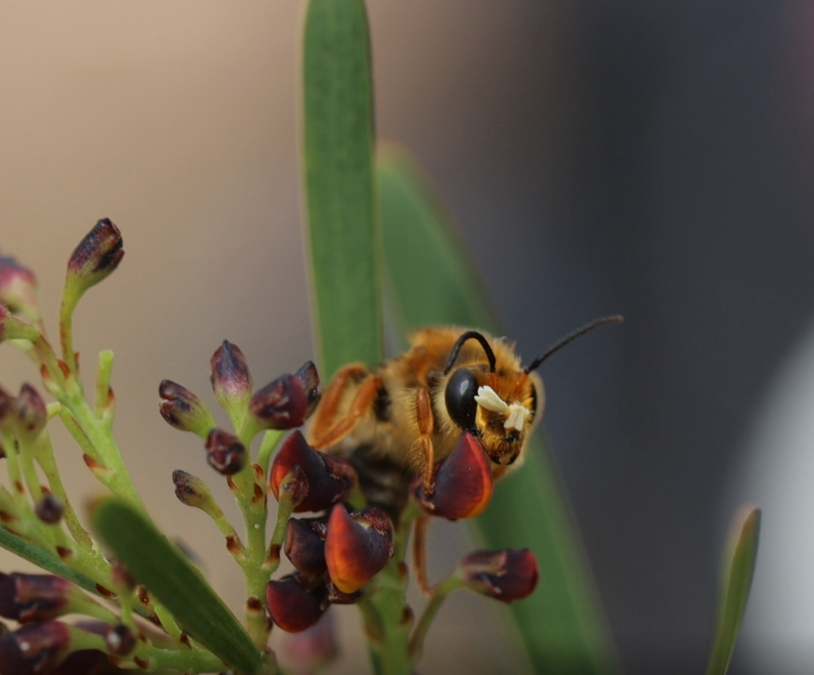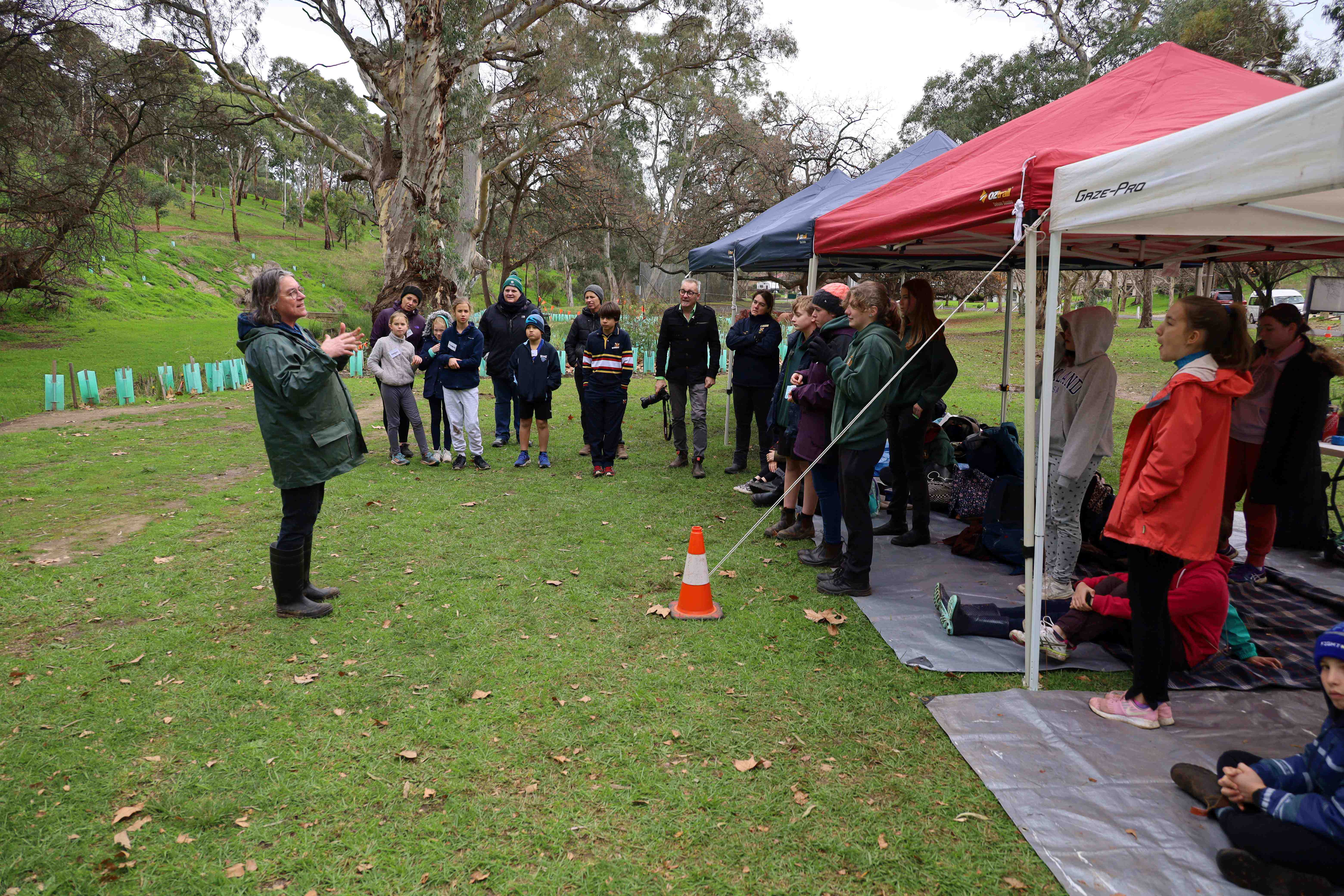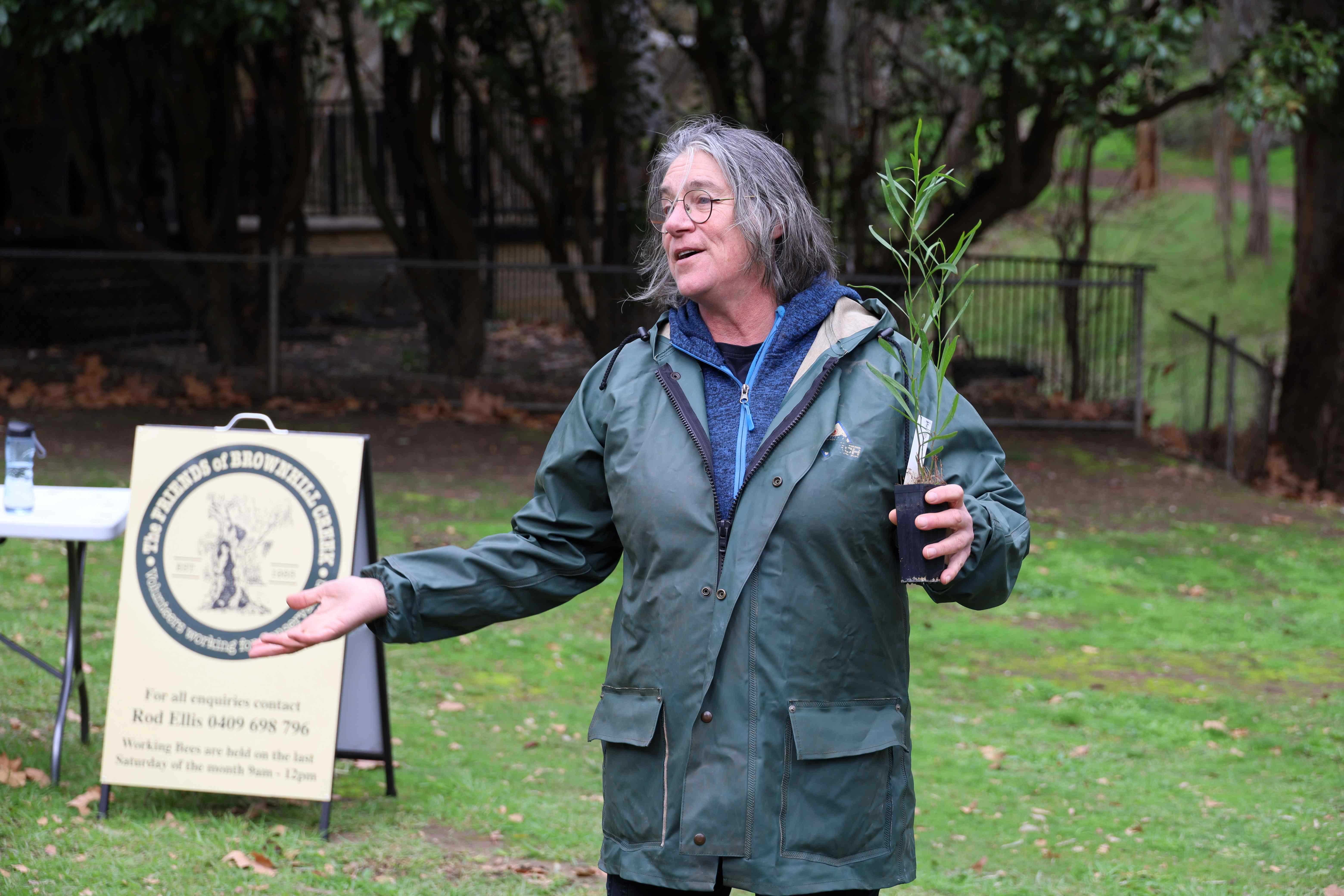A grant project has brought renewed focus to the needs of a local native bee of the Adelaide foothills. Find out how a Grassroots Grant is enabling key work and knowledge sharing to bring this bee back to the ‘burbs.

University of Adelaide entomologist and bee specialist Dr Katja Hogendoorn has launched a dedicated project to share information about native golden pea bees.
Her knowledge and long-standing interest in the golden pea bee led her to applying for a Grassroots Grant. The grant has facilitated knowledge sharing about the bee, which is significant given its recent decline. While golden pea bees were once commonly found across our foothills and suburbs, they are now only found in select locations within the Adelaide Hills.
The golden pea bee (Trichocolletes venustus) uniquely uses pollen from only a few species of native peas (Fabaceae), but is also an important pollinator of donkey orchids, which benefit from as a case of mistaken identity for the pea species. The orchids mimic the native peas and receive critical pollination as a result.
Dr Katja Hogendoorn is sharing information about the bees and the plants that they rely on, with the hope that the bees can be brought back to our suburbs.
Read on to discover how a Green Adelaide Grassroots Grant is helping to bring a renewed focus to these native bees.
Why is this grant project important?
Dr Katja Hogendoorn explained that the project is shedding light on an iconic native species.
“The golden pea bee is an iconic, specialist bee,” Katja said.
“It is vulnerable, though, because of its reliance on native bitter peas (the genus Daviesia), but not many people plant these in their garden.
“Bees that rely on a few plants only are at risk of habitat loss, and extinction.
“This is why sharing information on the pea bee with the community was really important.
“Through my project, I was able to organise plantings, create information packs about the bee and share this through presentations to schools and community groups, alongside creating a video and informative signage to help raise awareness in the broader community,” Katja said.

How did the grassroots grant help?
Demonstration plantings, workshops, presentations, a video and informative signage are all helping to raise awareness and knowledge of the golden pea bee.
Katja explained that sharing knowledge about the plant that the bee relies on was key to this project.
“Once the community heard about the bee and its decline in the foothills and our suburbs, many people wanted to know how they could help out,” Katja said.
“It was important that I built into the presentation for schools and community groups some clear information, and even a demonstration of planting, for the native peas associated with the bees.
“It is this information which has taken passive audiences to passionate bee enthusiasts, because they have something which they can actually do to support the bee.
“Following my workshop, many groups have facilitated their own on-site planting of native pea species.
“It is my hope that with more available food plant species, we may see these bees back in the suburbs of Adelaide.
“And there are flow on effects of these workshops and plantings.
“The kids who are involved go back and tell their parents, or the community groups share with their contacts, and as a result we are building a real network of native bee enthusiasts,” Katja said.

How did the project improve the environment for the community?
Following connecting with a range of schools and community groups, Katja has re-visited several sites where native peas were planted. Some of the plantings have already attracted pea bees, which is a fabulous outcome.
“From Urrbrae Agricultural High School, who had great results planting from seeds, to a number of sites across Brownhill Creek and Belair, there is now a growing source of food plants for the golden pea bee,” Katja said.
“I would like to keep amplifying this message, and get more people learning about planting native pea species.”
Any advice for future applicants?
Katja passed on the importance of building a legacy.
“I have been researching within this area for a long time – native bees are my passion,” Katja said.
“But this project lets this knowledge live on, other people now love the bee, they want to help the bee, and they are now empowered to do more to help us bring the bee back to the suburbs.
“Success will be if we can see pea bees back in the foothills or suburbs where they have disappeared from.
“And my work will continue, I am hopeful to produce a book in the future, and keep on sharing the story of the golden pea bee,” Katja said.